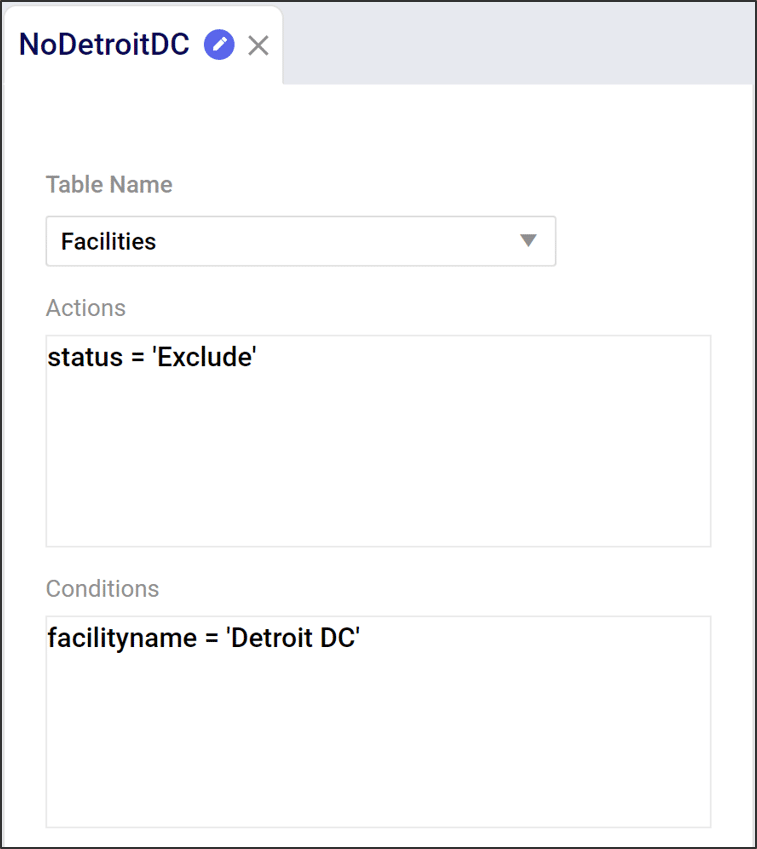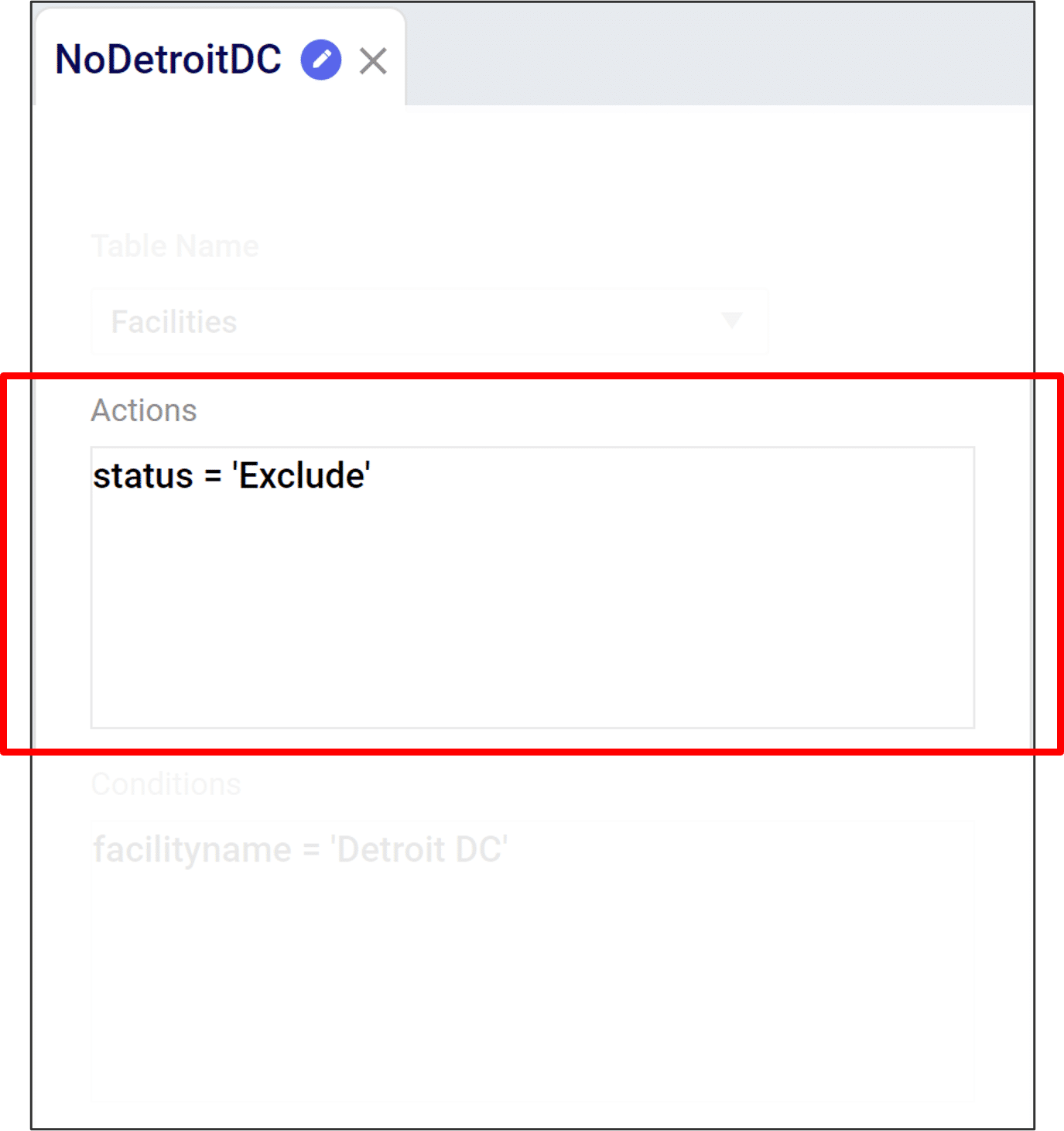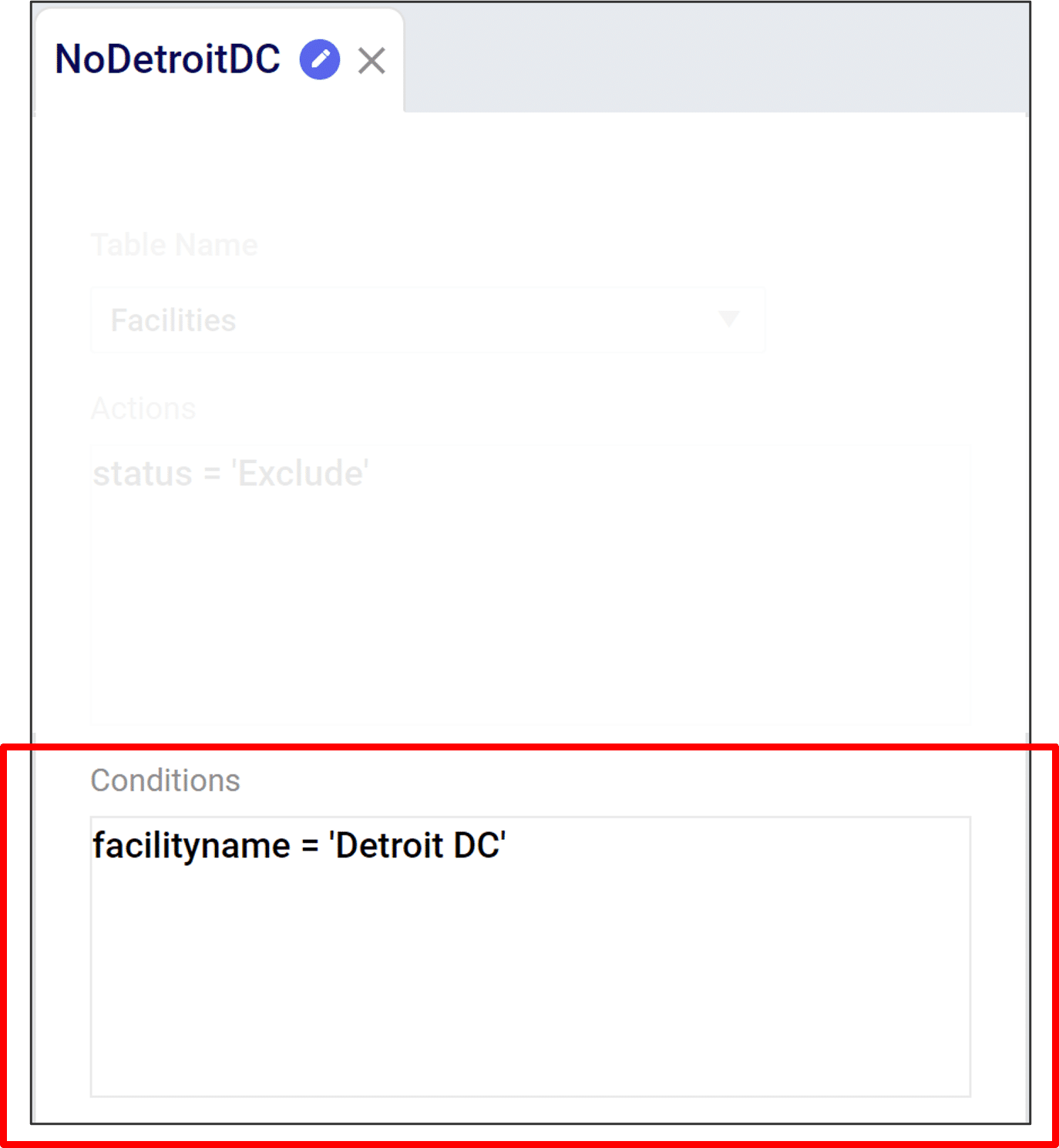

To describe the action and conditions of our scenario, there are specific syntax rules we need to follow.
In this example, we are editing the Facilities table to define a scenario without a distribution center in Detroit.

Actions describe how we want to change a table. Actions have 2 components:
Writing actions takes the form of an equation:
Further detail on action syntax can be found here.

Conditions describe what we want to change. They are Boolean (i.e. true/false) statements describing which rows to edit. Conditions have 3 components:
Conditions take the form of a comparison, such as:
Further detail on Conditions syntax can be found here.

To describe the action and conditions of our scenario, there are specific syntax rules we need to follow.
In this example, we are editing the Facilities table to define a scenario without a distribution center in Detroit.

Actions describe how we want to change a table. Actions have 2 components:
Writing actions takes the form of an equation:
Further detail on action syntax can be found here.

Conditions describe what we want to change. They are Boolean (i.e. true/false) statements describing which rows to edit. Conditions have 3 components:
Conditions take the form of a comparison, such as:
Further detail on Conditions syntax can be found here.


